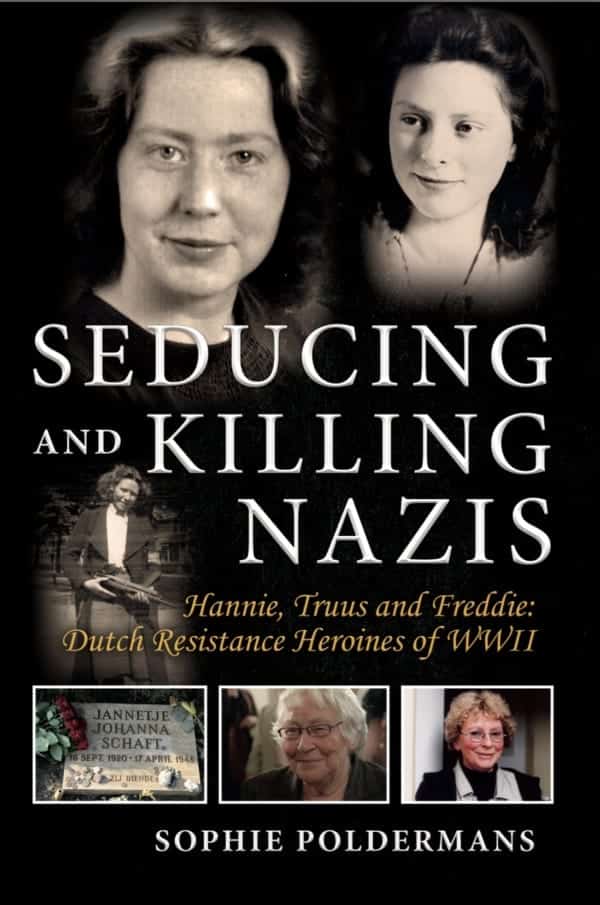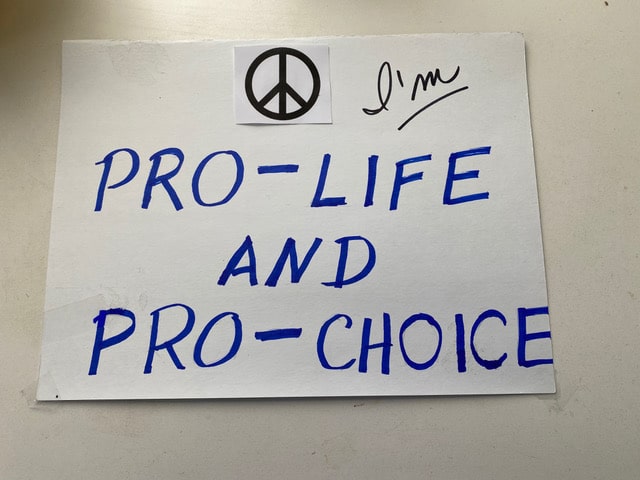
We know from academic research that women and men experience conflict and its consequences – and peace – differently. Traditionally, women have always been portrayed as victims, while in fact, a deeper look at research – and personal knowledge – show that it is precisely women who are better leaders in times of conflict and crisis and who can best rebuild a post-conflict society. In addition, they are better instigators and managers of change. Popular history has hidden many of these heroic women, but they have been hiding in plain sight. Here, below, meet three remarkable and courageous young women who showed genuine purpose-driven leadership during World War II: Hannie Schaft and the sisters Truus and Freddie Oversteegen.
When I was a teenager myself, I was fascinated with the story of Hannie Schaft, the icon of female Dutch resistance, whom I dedicated my high school history report to. I took my research very seriously and interviewed Truus Oversteegen, Hannie’s fellow resistance comrade and friend who was still alive at the time. Immediately a bond grew from there. Truus trusted me with her story, introduced me to her sister Freddie, asked me to be the keynote speaker at the National Hannie Schaft Commemoration and to serve on the board of this foundation. This grew to be a 20-year lasting friendship and a life’s work. I captured the story of this famous trio in my book Seducing and Killing Nazis.
Hannie Schaft (19) and the sisters Truus (16) and Freddie (14) Oversteegen were three teenage Dutch girls when World War II broke out when Nazi Germany occupied the Netherlands in 1940. Immediately these young women were deprived of their childhoods and faced a question far beyond what was expected of them: adapt or resist?
They decided to resist the Nazi regime “if necessary, with weapons” as some of the very few women who did so. Their missions consisted of gathering vital intelligence for the resistance, providing Jewish children with safe houses, stealing identification papers, and attacking and bombing railways and other strategic places. Most perilously – and boldly – they would “liquidate” (kill) Nazis and Dutch traitors. Sometimes they would even employ their youth, beauty, femininity and sexual power as secret weapons of war. They would dress up nicely, go into bars to seduce high-ranking Nazi officers, lure them into the woods and kill them.
These three young women came from completely different backgrounds and had totally distinct characters. They first met within their resistance cell in the summer of 1943. Hannie was auburn-haired and clever; Truus was the down-to-earth tomboy and natural leader; and Freddie was feminine and fierce. What drove these very different women and what can we learn from them?
First of all, there was their passion. Instead of experimenting with makeup and giggling about boys they felt very strongly about fighting injustice. Ideals of justice, peace and equal treatment were instilled in all three from an early age. The Oversteegen sisters were raised by their divorced mother who was active for the Dutch Communist Party and Hannie was a passionate law student.
Their second urge was their purpose – safe lives. They honored the same ideal of a livable world and felt compelled by the inhuman conditions of the German occupation to take up arms to fight injustice. They did what they did “because it had to be done,” as they so strongly believed in, displaying integrity and authenticity. They were driven by a set of core values rooted in their strong moral compass. They lived and breathed these beaux idéals that provided them with the energy to survive despite the horrible war circumstances like major food shortages, cold and constant threat. These values made them able to spot opportunities to contribute to a more just and equal society, to think strategically and to fuel them with the courage to take major risks.
The third shared value was their belief in people. Their focus was people first – that, they strongly felt, was what they owed to humanity. Compassion, empathy and solidarity were paramount. By living out these values, they put their own lives on the line, went to extraordinary lengths and displayed exceptional bravery. Their absolute main challenge was to remain human in inhuman circumstances.
Fourth, the three young women were true visionaries. They adopted a diverse, inclusive and international perspective that was innovative, strategic and sustainable. Discrimination was an absolute no go. They strived for a society where Jews, non-Jews, homosexuals, people of color and women would all be accepted by virtue of their humanity. When discussing rebuilding a post-conflict society Truus stressed equal treatment, Freddie embodied a true feminist and it was Hannie’s dream to work for the League of Nations (forerunner of United Nations) in Geneva to contribute to international peace and security.
Fifth, the three young women unveiled incredible perseverance. The three women warriors bravely carried out hazardous missions that were not just technically challenging, but mentally difficult as well. They persisted in their “jobs”despite their own physical pain (starvation, cold, disguising, hiding) and psychological suffering (grief, depression, stress, trauma, guilt). They lost fellow resistance members, were at the forefront of the battlefield, always had to keep quiet about their whereabouts and carried an enormous weight on their shoulders with regard to German reprisals and the fact that they took human lives. They manifested resilience, sailed on their vigorous moral compass and kept going.
Tragically, Hannie Schaft did not survive the war. She was arrested and executed by the Nazis just before the end of the war and became the icon of female Dutch resistance during World War II. The Oversteegen sisters survived the war, but were forever haunted by the demons of their past. Truus became a famous public speaker, sculptor and painter until her death in 2016. Freddie lived a more secluded life, focusing on her family until it ended in 2018.
This story is unique and remarkable. However, as a lawyer who has specialized in international criminal law and especially in the role of women in armed conflict, I discovered a pattern of other great women leaders during my research in post-conflict areas like Kosovo, Bosnia, Herzegovina and Rwanda. We see the same on the political and corporate level and the domestic arena, e.g. COVID-19 pandemic, economic crises, climate change. That’s why I founded my organization Sophie’s Women of War to shed light on women’s leadership in times of conflict, crisis and change.
In an increasingly divided world, there are many leadership lessons we can derive from these women that we can translate into our own world. Let them enrich and inspire you and challenge you to take a moment to look into the mirror and to reflect on your own life in order to decipher which purpose and core values drive you.
About the Author: Sophie Poldermans, residing in the Netherlands, is the owner and founder of “Sophie’s Women of War,” shedding light on women leaders in times of conflict, crisis and change. She is the author of the New York Post & Amazon best seller “Seducing and Killing Nazis. Hannie, Truus and Freddie: Dutch Resistance Heroines of WWII (USA, 2019).” She personally knew Truus and Freddie Oversteegen of the book for 20 years and worked closely with them for over a decade as a board member of the Dutch National Hannie Schaft Foundation. She is also an international speaker, lecturer and consultant on women and war, women’s leadership and business innovation advocating for women’s rights around the globe.https://sophieswomenofwar.com



